If you are new to affiliate marketing, you probably continuously encounter different terms and abbreviations that do not make much sense.
Choosing between PPC and PPA campaigns is only easy if you know what both tactics entail.
Glossary of Affiliate Marketing Terms
When getting into the affiliate marketing business, you have to make yourself familiar with dozens of terms, and today I decided to put together the ultimate affiliate marketing glossary.
In this post, we will discuss the following affiliate marketing terms:
- What is PPV?
- What is CPC?
- What is CTR?
- What is CPV?
- What is CPL?
- What is CPM?
- What is CPE (Cost per Engagement)?
- What is CPO?
- What is Cost per Hire (CPH)?
- What is OPM?
- What does KISS mean?
- What is KPI?
- What is CPA?
- What is B2C?
- What is B2B?
- What is B2G?
- What is PPC?
- What does HIPPO mean?
- What does ROI mean?
- What does FYI mean?
- What is FOMO?
- What is SEO?
- What is SEA?
- What is SEM?
- What is an SMMA?
- What does TL; DR mean?
- What is the BANT approach?
- What is https?
- What is USP?
- What is SaaS?
- LSI Keywords
- What is a discount code?
- What does FAQ mean?
- What does Q&A mean?
- What are Google SERPs?
- What is an EMD domain?
- What is an A / B test?
- What is an ezine?
- What is a sales funnel?
What is PPV?
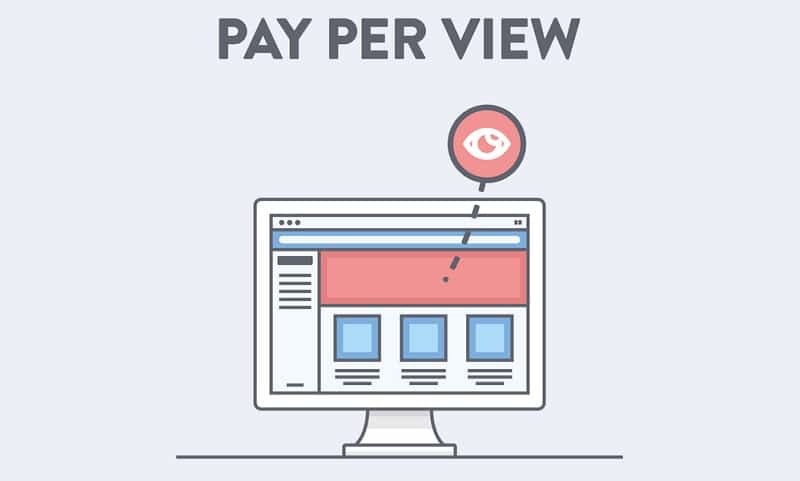
PPV is a payment method when you Pay Per View. PPV simply stands for Pay Per View.
Suppose you want to place an ad on a website, and you choose PPV as the campaign method. You can then decide that you want (for example) 1000 views, and you’ll pay a fixed amount for it. This means that your ad will be displayed 1000 times for the money you paid.
In this case, you do not pay extra if someone who had seen your ad has actually clicked on it.
The downside of PPV in affiliate marketing
PPV’s disadvantage in affiliate marketing is that you are not always sure that the ad was actually “seen” when the visitor loaded the ad.
The visitor’s eye can be in a completely different place on the webpage and does not necessarily have to see the ad.
You pay for this view, but it may be of no use at all.
A solution for this situation would be a PPC campaign (Pay Per Click), where you only pay when someone actually clicks on your ad.
What is CPC?
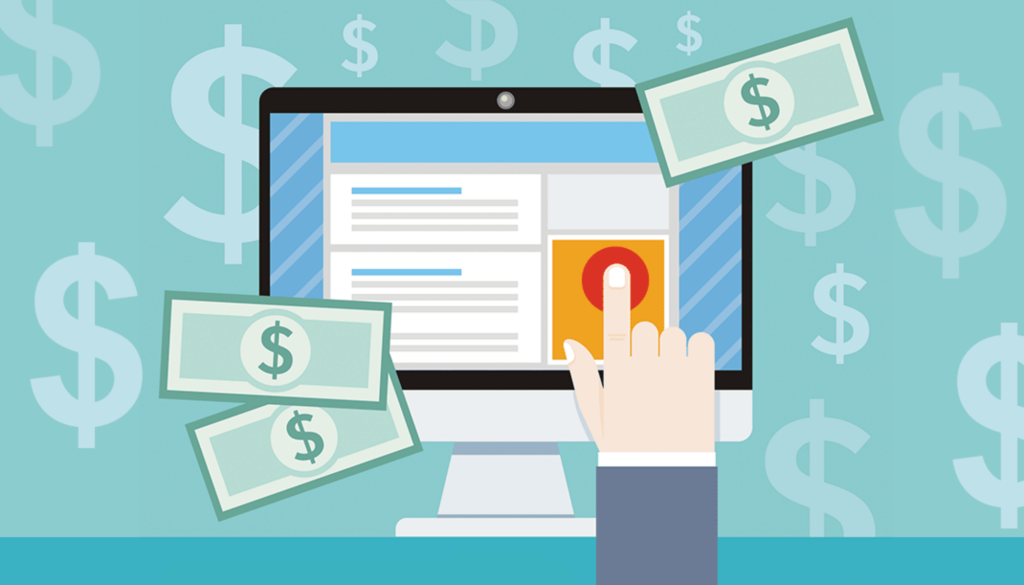
CPC stands for Cost Per Click and is a payment method for online advertising. With CPC, you pay per click; this is the form of advertising which Google Ads was initially based upon. It’s up to you to determine how much you want to pay per click on your ad.
You pay every time someone clicks on your ad, and therefore, you know that you only pay for someone who actually visits your website.
Instead of CPV (Cost Per View), you really only pay when someone clicks on your ad and not when someone just loads your ad on the page.
How to set CPC?
If you create an ad in, for example, Google Ads and choose CPC as a campaign model, you can manually set how much you want to pay for every click, based on visitors’ location.
You can also choose to optimize the CPC by Google so that Google determines how much you pay per click. Google then looks at what the competition pays and what you have to pay per click to be above the competition.
Of course, you can also set a maximum CPC bid, which means that you never pay more per click than the maximum CPC bid you specified.
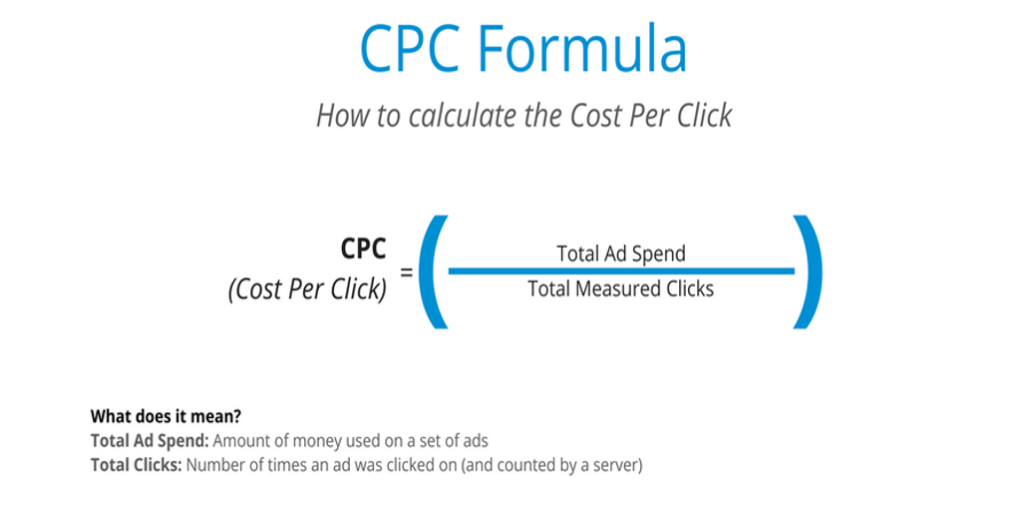
What is CTR?
CTR stands for Click-Through Rate and means the percentage of an ad or banner that clicks through to your website.
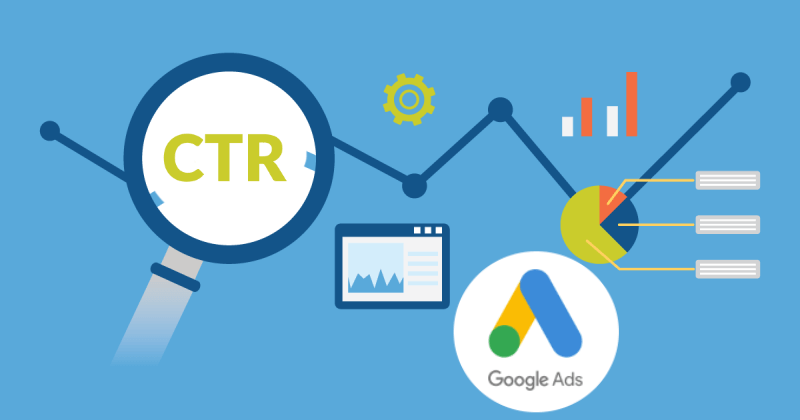
Suppose you have a Google AdWords ad, and 100 people see the ad. From these 100 people, 10 people who see the ad click on it – in this case, the CTR (Click Through Rate) is 10%.
By testing advertisements against each other (A/B split testing), you can increase the CTR. You can then measure which ad converts better.
Therefore, CTR is the click-through ratio and is always displayed in percentages.
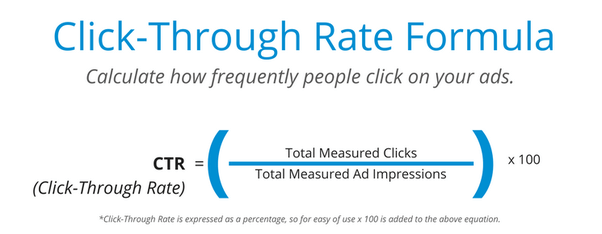
How to increase CTR?
Of course, your goal is to have as high CTR as possible. The more people click on your ad (or link), the better.
Here are a few tips to increase the CTR:
- Use an attractive title.
- Make the title with a question, such as “Want to Increase CTR? 10 Tips for a CTR increase!“
- Match the CTR to your target group
- Test different ads; try split testing.
Many people are too lazy or forget to do A/B split tests and miss out on many visitors. It is always smart to test different ads against each other.
In addition to short-term results (more visitors thanks to this advertisement), you also benefit in the long term: you know what works better.
In my article about how to create the perfect newsletter, you will find more tips on the CTR topic.
What is CPV?

CPV stands for Cost Per View – the amount paid for viewing an advertisement; cost per view.
When you use a CPV payment model with an ad on the internet, you pay for every time your ad is shown.
CPV is often used by PPV marketers, where you pay per-view.
A pop-up is often triggered when the visitor has visited a particular website or page. When the visitor sees this pop-up, the advertiser pays for it. The cost per view is generally really low; think of something like $0.001 per view.
CPV can also be used for banners, but it’s not very common. PPC is a much more popular form of advertising for banners when the advertiser only pays when the ad has been clicked. This is a higher amount but also yields more since the visitor has already clicked on the ad.
CPV is not always relevant
With CPV, it is difficult to say whether the visitor has actually seen the advertisement since the visitor’s eye did not have to have fallen on the advertisement; the advertisement is loaded, but the visitor does not see it.
As a result, advertisers often prefer to pay per click.
What is CPL?
CPL stands for Cost Per Lead and means what it costs to get a lead.

Cost Per Lead is translated into someone interested in your product or service.
Suppose you know that obtaining a lead costs you about 2 dollars but that the average Lead earns you 3 dollars; then it is, of course, a matter of collecting as many relevant leads as possible.
CPL is, therefore, not about the number of people who click on an ad, but about the number of people who actually become a lead – and thus leave his or her data to be followed up.
When the lead data has been collected, it is important to follow up on it properly. You can do this by using an email campaign, autoresponder, or making a call appointment.
Difference between CPL and CPS (Cost Per Sale)
CPL should not be confused with CPS (Cost Per Sale).
CPS is about the costs acquired to get a customer – a customer is different from a lead because a customer has converted and spent money / made a purchase. A lead has not yet been converted into a customer.
How to Calculate CPL?
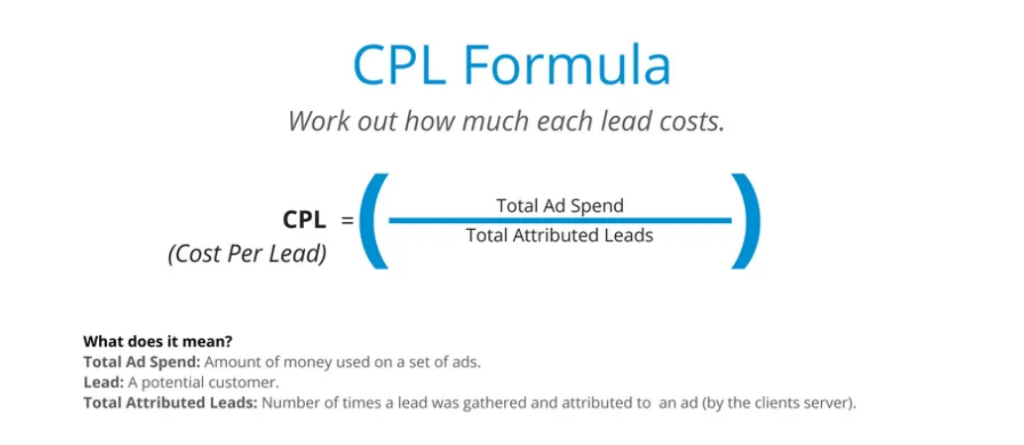
It’s easy to calculate your Cost Per Lead (CPL). This is how you can calculate your marketing costs:
How much do you pay to collect the leads?
For example $1000 per month.
How many leads do you collect?
View how many leads your marketing budget is generating.
For example 100 leads per month.
Divide your marketing expenses by your new leads.
Now you divide the spent budget by the number of new leads you have obtained.
In our example: 1000/100 = $10 per lead.
The aim now is to keep your CPL as low as possible, and the return per Lead as high as possible.
What is CPM?
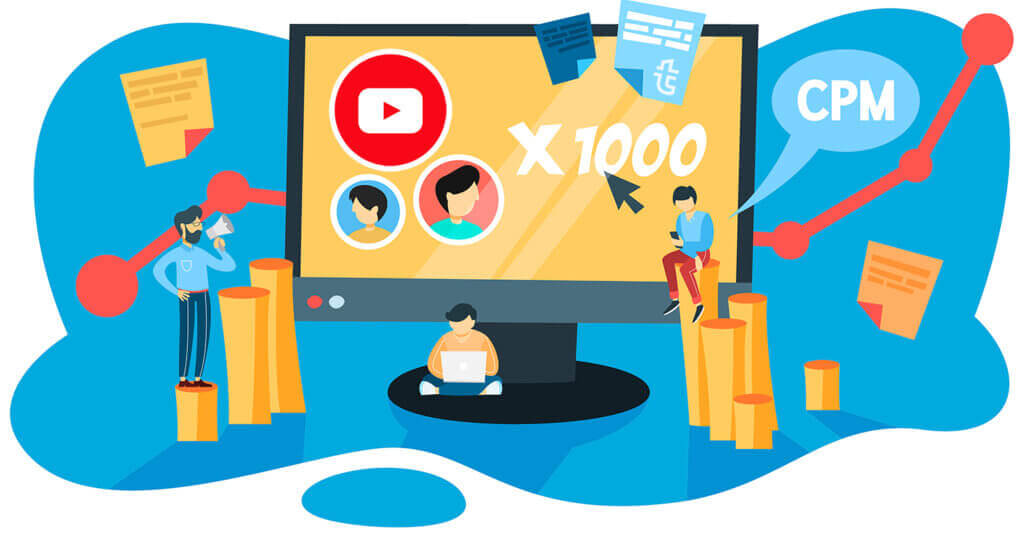
CPM means Cost Per Mile is another abbreviation. Cost Per Mile is a household name in the online advertising world, meaning you pay for a thousand views.
Suppose you want to place an ad on another website. You can then start advertising according to the CPM principle. This means you pay a fixed amount per thousand views of your ad.
For example, You can choose CPM to build more brand awareness.
If your website’s goal is to get more visitors, then it is better to choose CPC (Cost Per Click), where you pay for the number of times your ad is clicked.
CPM is no longer popular
Currently, CPM is not used often anymore, as it is difficult to know how many times an ad is shown.
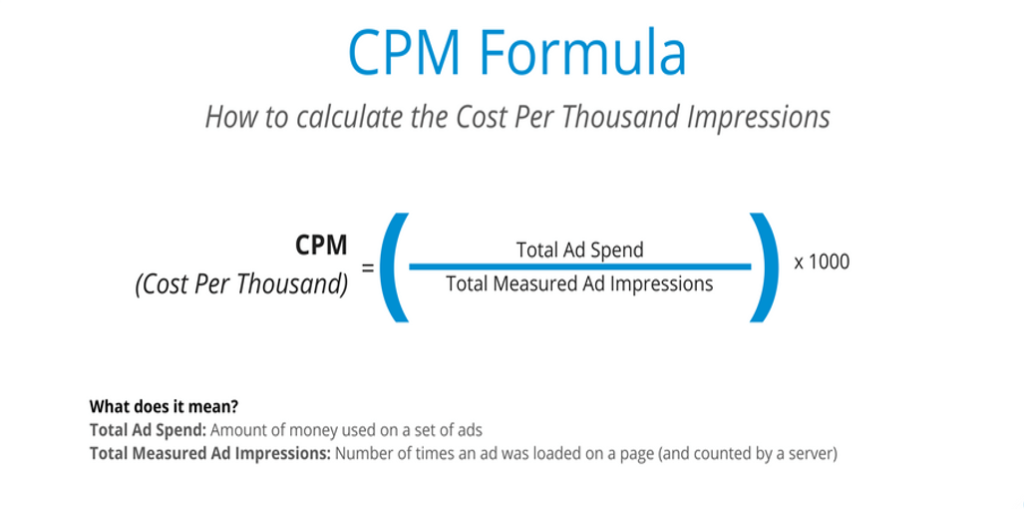
Visitors can load the page on which the ad should be displayed, but whether they see the ad is different. That is why more and more advertisers would rather pay per click.
What does the cost per engagement (CPE) mean?
Cost Per Engagement represents an advertiser’s costs for interacting with an advertisement.
An interaction with an advertisement means that a visitor (for example) moves the mouse over the banner, causing something to happen, such as a video being played.
The advertiser sets a fixed amount for this so that this fixed amount is paid per ‘interaction.’ Whether the visitor actually clicks through is a second question and is not included in the price. This really concerns the interaction that takes place with the banner or other forms of advertising.
Cost per engagement is not a cost per action (CPA).
What is Cost Per Order (CPO)?
Cost per Order represents the average amount spent in marketing to achieve a sale (or “Order”).
The Cost per Order (or CPO) is an important measuring point because it can be used to determine whether the marketing is efficient. For example, when $1000 are spent on marketing, but only $400 comes in from orders and sales, the CPO is negative, and something needs to be improved and adjusted.
Calculate Cost per Order (CPO)
The CPO can be calculated by dividing all marketing spending by the number of orders.

In traditional media, such as TV and radio advertisements, the CPO is difficult to measure, but this is relatively easy to measure via the internet; because you can measure conversions. This way, you can measure where the sale comes from and how much has been spent on it.
What is the cost per hire (CPH)?
Cost per hire is a term used to indicate the costs incurred for recruiting and hiring new staff.
This includes the costs that the company has to invest to find and recruit new staff. Some examples of these costs are, for example, the costs of placing staff advertisements on recruitment sites and freeing up time for conducting job interviews.
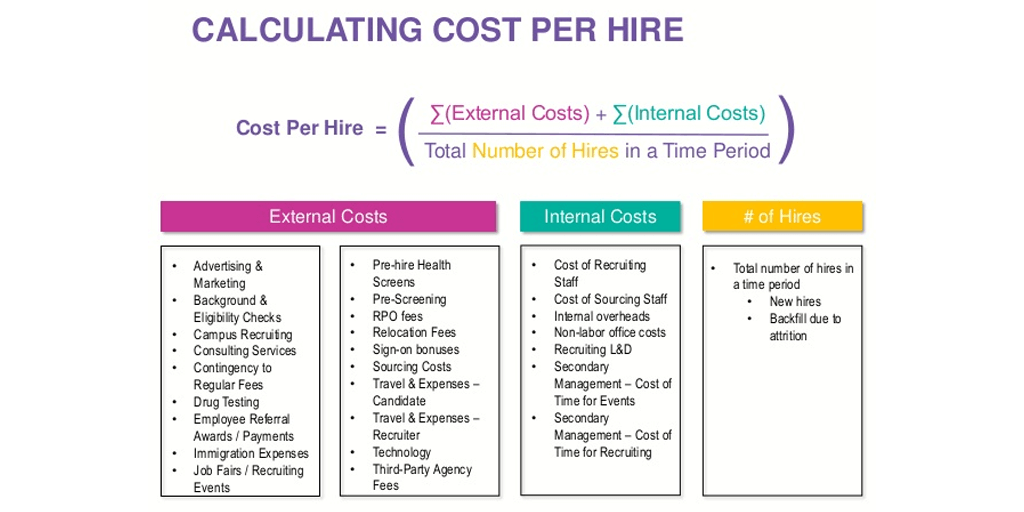
Cost per hire is a cost item that recurs in almost every business. Still, for larger companies, it is a more important KPI because it can be used to fulfill functions, and therefore more time and budget must be offered to recruit – and also take onboard – new staff.
What does orders per mile (OPM) mean?
Orders Per Mile (OPM) stands for the number of orders from a thousand people reached. An example is the number of orders that come from a newsletter sent to your mailing list.
If you send a newsletter to 10,000 people and produce 1000 orders, you have an OPM (orders per mile) of 1000.
What does KISS (Keep It Simple, Stupid) mean?

KISS – the abbreviation stands for Keep It Simple, Stupid. This is meant to keep it as simple as possible.
KISS is another term for ‘less is more’, meaning that ‘keeping it simple and clean is better than overdoing and over-saturating’.
Oftentimes, marketers unintentionally make their products way too difficult. Like in the advertising world, communicating as little as possible is sometimes much better so that the message becomes much clearer. Precisely by making it simpler, the message is easier to understand and remember.
KISS is, therefore, often used in the internet marketing world as a term to keep it as straightforward as possible.
What does the Key Performance Indicator (KPI) mean?
Key Performance Indicators (KPI) are the key performance indicators in a business, brand, product, or service. The KPIs are the variables that are able to measure results properly.
When you measure KPIs, you measure the performance of certain indicators of the company. You can think of the number of new customers that came through an advertisement, the turnover, profit, customer complaints, etc.
Companies often set KPIs as goals. For example, “We want 100 new customers in January”. The KPI of 100 new customers is therefore set in January.
In order to determine KPIs, it is, of course, important to make the goals measurable and realistic.
What is CPA Marketing?
CPA Marketing stands for Cost Per Action Marketing.
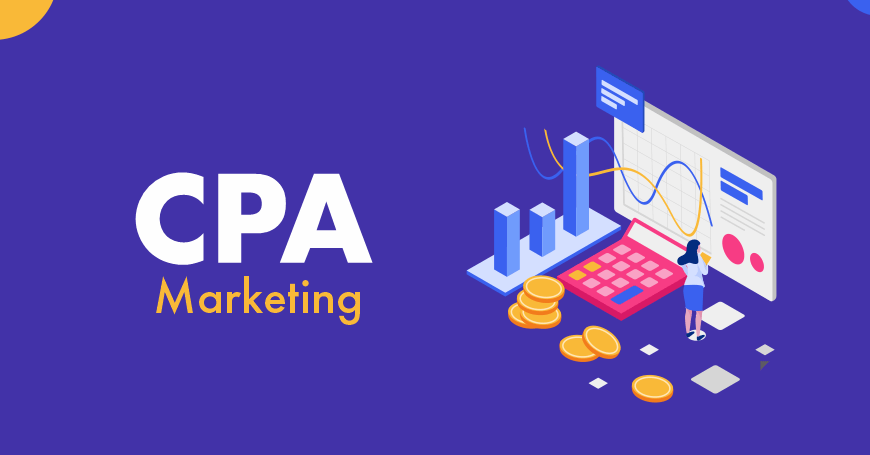
This means that with CPA Marketing, you pay an amount per action. You can think of a certain price for a newsletter subscription or an app download. You only pay once the person completes a specific action, which is what Scaleo software is great at measuring.
Therefore, a company pays you per ‘action’ that you propose – which ‘action’ will be and how much you pay for it can vary enormously. Some companies may pay you $50 per Lead; others will pay you only $1. This depends on the niche and the product you are offering or promoting.
Different Types of CPA Marketing
There are different types of CPA Marketing. Below is a list and some examples.
- CPL (Cost Per Lead) – You get paid for referring a lead (for example, name and email address)
- CPD (Cost Per Download) – You get paid for every app download.
- CPS (Cost Per Sale) – You get paid for every sale you make (so when someone buys something through you)
- PPC (Pay Per Call) – Here, you get paid for every phone call you make.
- CPC (Cost Per Click) – You get paid for every click.
CPA and advertising on Facebook
It is also possible to implement the CPA marketing strategy on Facebook.
For example, you can specify how much you want to pay for likes, app installs, or claimed offers.
On Facebook, you can easily create an ad where you pay per action.
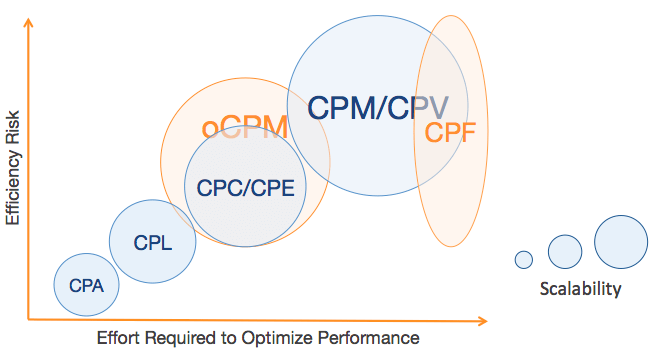
What is B2C?
B2C stands for Business to Consumer. This means nothing more than that companies directly provide their services and products (directly) to consumers.
The ‘opposite’ of B2C is B2B, which stands for Business to Business, with which companies deliver services and products to other companies.
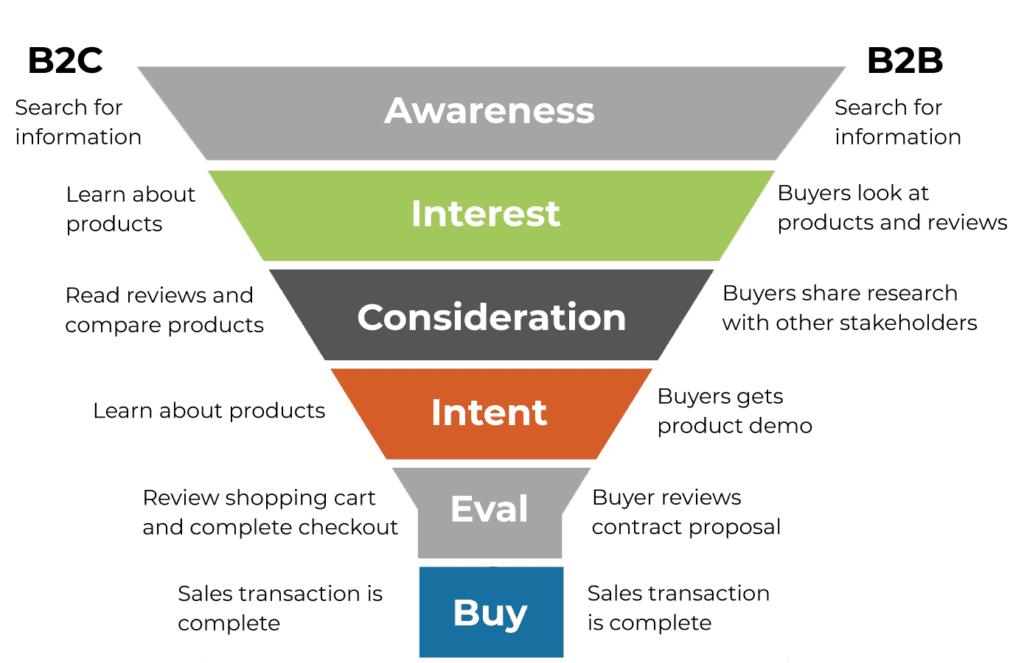
Of course, it is also possible for companies to supply both companies and consumers; for example, Phillips, which has products for both the consumer and business markets.
What is B2B?

B2B stands for Business to Business. This means that companies offer their products and services to the corporate market.
B2B companies deliver their products/services to other businesses.
When discussing B2B, you mainly talk about large orders and longer partnerships.
What is B2G?
B2G stands for Business to Government, meaning companies provide their services/products to government agencies.
In practice, you do not really hear the B2G term passing by very often, that is because you can also count B2G under B2B (Business to Business) since government institutions are often independent ‘companies’.
An example of B2G could be an IT company which makes software applications for government institutions.
What is PPC?
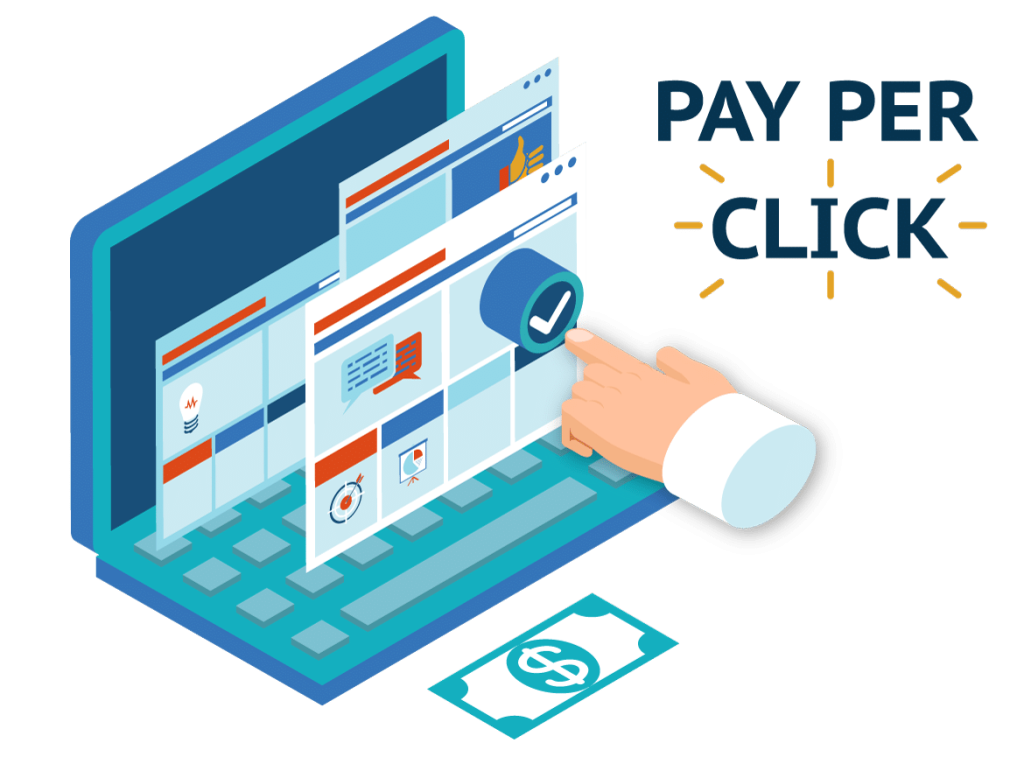
PPC is a form of advertising where the advertiser pays per click. PPC stands for Pay Per Click. With the PPC model, you pay for every visitor who clicks on your ad.
A good example is Google AdWords; these are the ads you see above Google’s free search results.
By the way, PPC can also stand for Pay Per Call.
Determine how much you pay per click.
An advantage of PPC is that you can determine how much you want to pay per click.
We call this CPC (Cost Per Click), the cost per click.
For example, if you pay $0.10 per click and get an average of $0.20 per click in return, you can set it not to pay more than $0.20 per click.
To quickly recap, here is an overview of affiliate marketing platforms based on CPM, CPC, CPL and CPA.
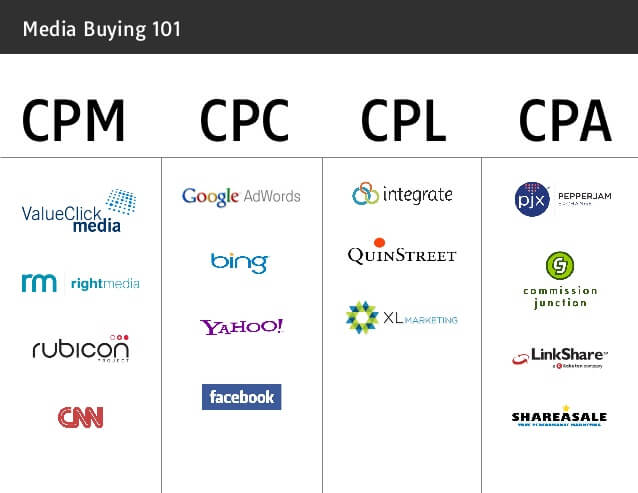
What does HIPPO mean?
The term and acronym HIPPO stands for Highest Paid Person’s Opinion.
A HIPPO simply means that this person earns the most within the company, so he is the highest on the hierarchy, and that this person’s opinion often matters the most.
As a result, managers and directors often (incorrectly) determine what is best for the company, simply because they think they have the last word because they earn the most.
Employees who earn less thus have less to say, so their opinion is often undervalued.
What does ROI (Return on Investment) mean?
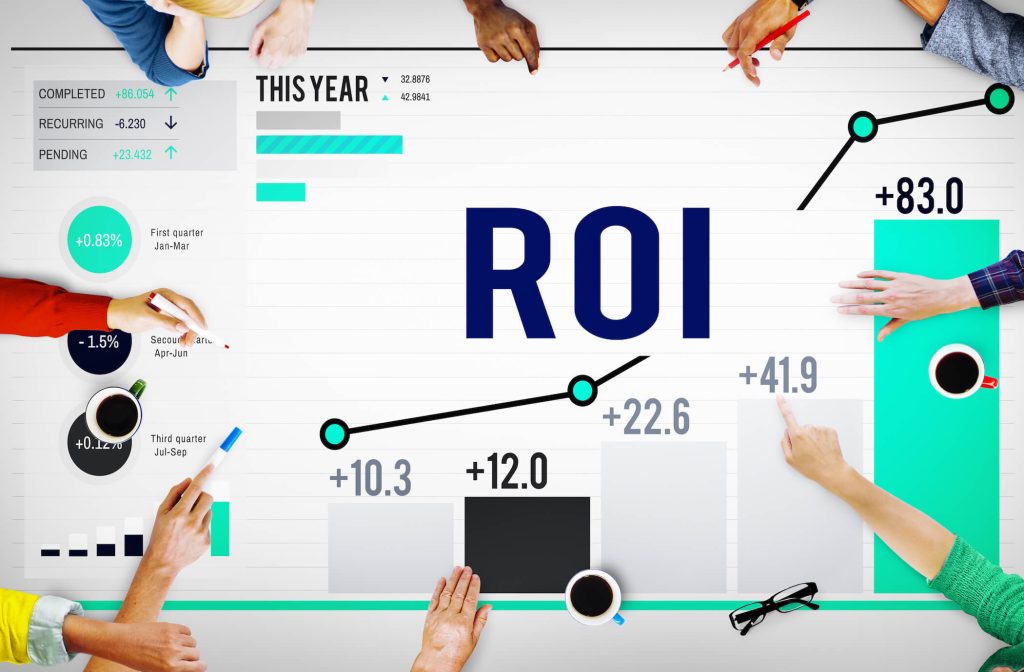
Return on Investment (ROI) is a performance measure used to evaluate an investment’s efficiency or compare various assets’ efficiency. ROI measures the return on a particular investment relevant to the investment’s price. In order to calculate ROI, an investment’s benefit (or return) of an investment is divided by the cost of the investment. The result is expressed as a percentage or a ratio. That is a profit.
Suppose you have an ad running, and for that advertisement, you spend $10 every day in advertising costs. This advertisement will earn you $25 per day. That is a $15 profit, so your ROI is $15.
Negative ROI
It is also possible that an ROI is negative. In plain language, it’s called “loss.”
For example, imagine that you spend $10 per day on advertising and only earn 3 dollars in return. Then you run a loss of 7 dollars, a negative ROI.
The goal, of course, is to have a positive ROI.
ROI through Investment
Another example of an ROI is that you have made an investment.
Suppose you bought a house for $200.00. You are going to renovate it and spend $10,000 on renovation costs. Later you sell the house for $300,000. Your ROI is $90k.
What does FYI mean?
FYI The acronym stands for For Your Information. In other words, “just so you know.”
FYI is often sent along in a forwarded email, where the recipient does not have to do anything immediately, but the message is sent purely for information.
What is FOMO? (Fear Of Missing Out)
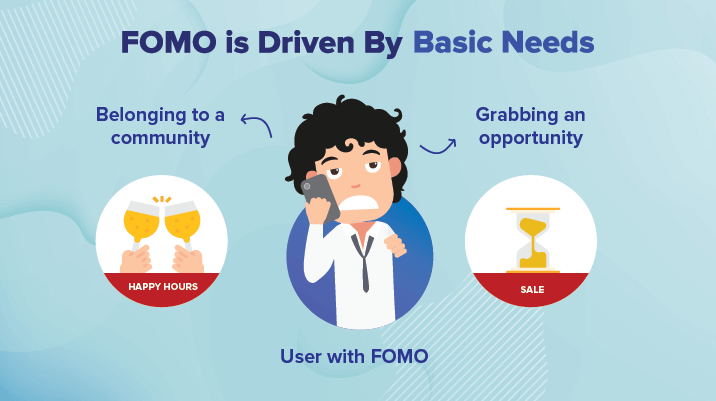
FOMO stands for Fear of Missing Out. A good example of this is the recent rise in Bitcoin value. Because the price of Bitcoin rose so fast, many people were afraid of missing the train. This made the value of the Bitcoin rise even faster – after which the price collapsed.
What happened is that many people feared that they would miss out on a “good chance of becoming a millionaire.” They have heard all over the internet that people had super high returns on buying Bitcoin, and they were afraid to stay behind. Because of this fear (of missing out), they decided to buy Bitcoin at the last minute.
FOMO in marketing
FOMO in affiliate marketing is the same as FOMO in social merketing.
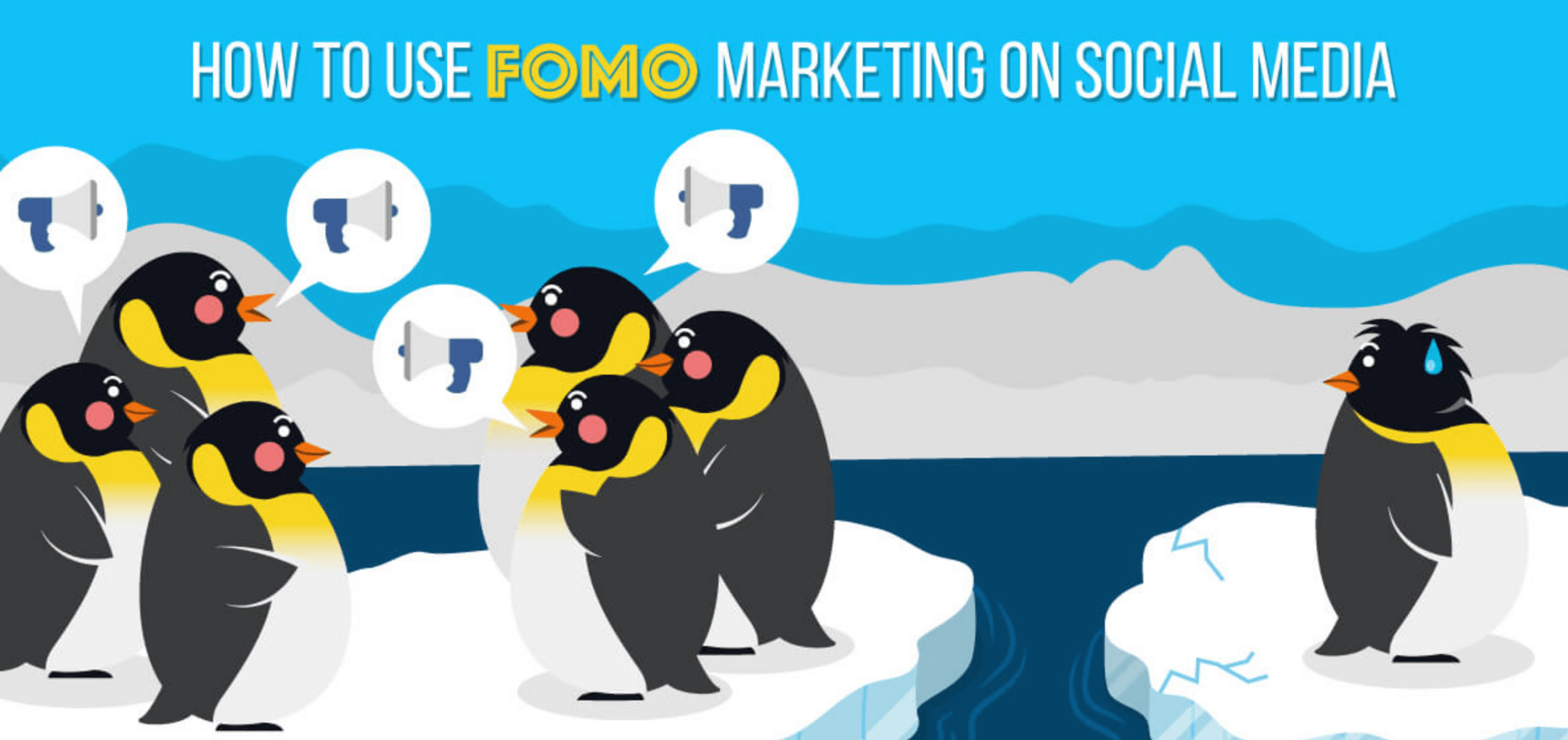
FOMO (Fear of Missing Out) is mainly due to social pressure. Because people hear that their friends and family have the product (in this case, Bitcoin), and there is a time pressure behind it (value will only go up, or the product will soon be unavailable), people do or buy things they normally wouldn’t have.
Applying FOMO is, therefore, a very powerful tool in marketing.
This is usually done by making a product available in a limited way or creating a time-limited promotion – for example, the product is “only on sale until Friday” or “limited quantity available.”
What is SEO?
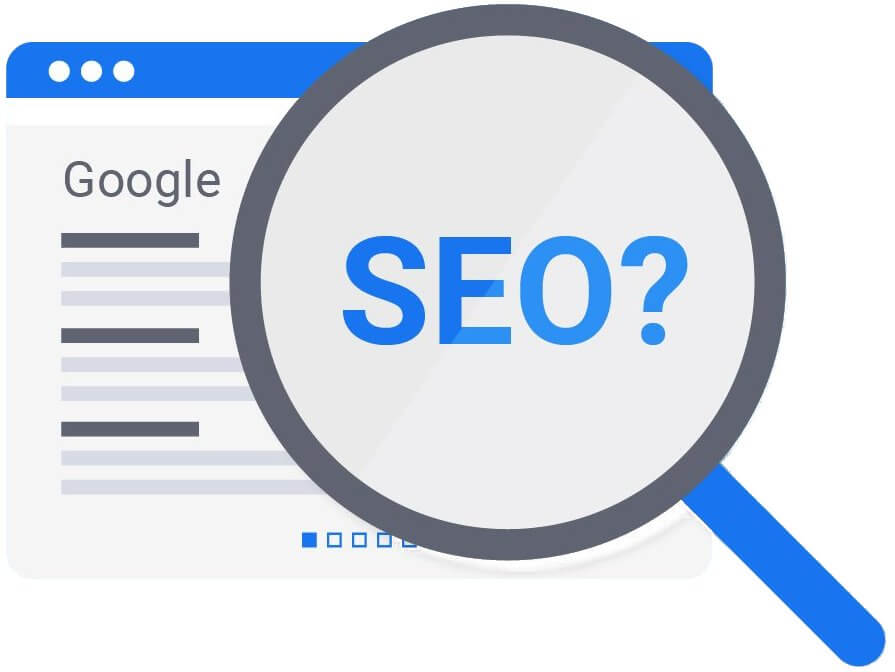
SEO stands for Search Engine Optimization and means optimizing websites for the best results search engines. Although this is not a directly marketing-related term, we cannot imagine marketing efforts without proper SE optimization. By working with SEO, you can get higher in Google and more (free) visitors to your website.
Search Engine Optimization is becoming increasingly important, and more and more companies are hiring people involved in the SEO to build a solid company’s presence in first positions.
By scoring high in Google on relevant search terms, many sales and conversions will flow in.
SEO in practice
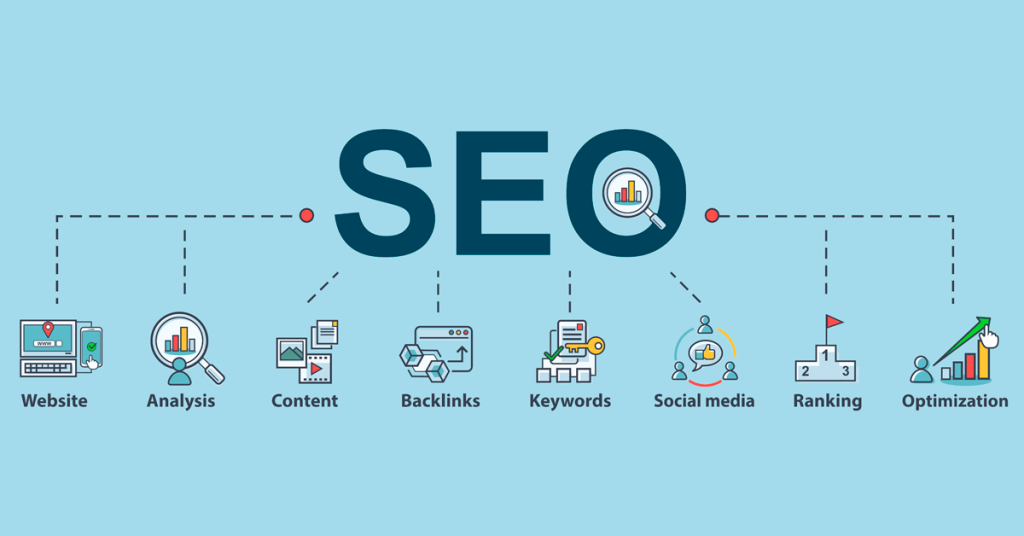
SEO is optimizing websites for search engines, especially for Google, as this is the largest and most popular search engine.
By adjusting your website’s structure, creating a good link profile, and publishing valuable content, you can ensure your website will rank higher and better in Google’s organic search results in the long run.
Here you can read my tips on how to rank better in Google with a microniche.
What is SEA?
No, it’s not a small ocean. SEA stands for Search Engine Advertising, and in short, it means advertising in search engines.
With Search Engine Advertising, you are actually advertising inside search results, for example, in Google and Bing.
Search Engine Advertising does not focus on the organic search results from Google and the other search engines, but the paid search results – often at the top- above the free search results.
Why choose Search Engine Advertising?
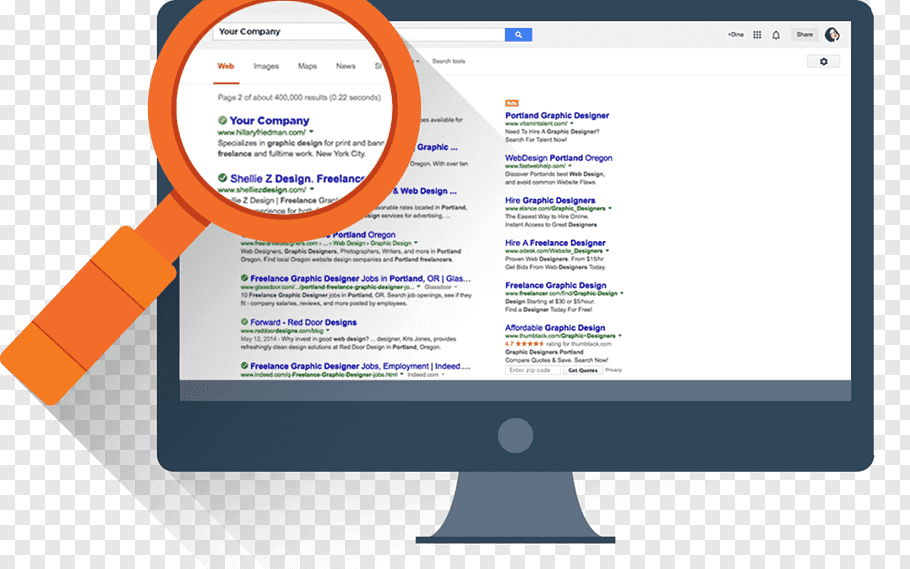
SEA is particularly interesting if you want to achieve fast results. If you are concerned with SEO (Search Engine Optimization – or the free search results from Google), it will take a long time before your website will rank high in Google.
With SEA, your website will appear on the first pages of Google, as long as you pay.
So you get quick results, and if you have a good website or landing page, this can generate money quite fast, as long as you get a positive ROI (Return of Investment), of course.
SEO vs SEA?
I am not much of a fan of SEA, but I understand that it can be appealing for many websites and companies – after all, you get immediate results.
However, if you focus on white hat SEO, you will not make much in the short term but in the long term. You will then receive “free” visitors to your website day and night.
If you stop your Search Engine Advertising campaign, you have nothing left; your ad and visitor flow are cut off.
What is SEM?
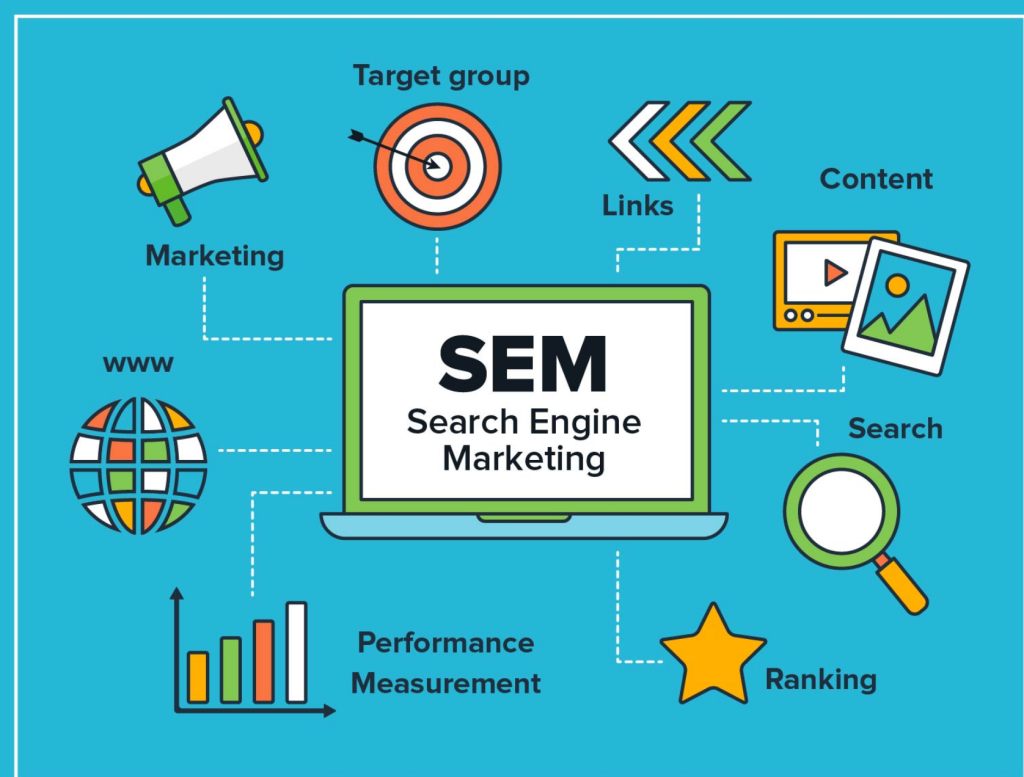
SEM stands for Search Engine Marketing and means that you make the website easier to find in the search engines. This can be done through SEO (Search Engine Optimization) and SEA (Search Engine Advertising).
By being easy to find in the search engines, you get more visitors to your website and can generate more leads and sales.
SEM is increasingly important and used by small and large companies.
SEM through search engine optimization
Search Engine Optimization (SEO) is one way of SEM. With Search Engine Optimization, you optimize the website for Google’s free search results (the organic results).
This allows you to get visitors to your website without paying for each and every one of them.
Read our blog post with tips to SEO-optimize your microniche in Google.
SEM through search engine advertising
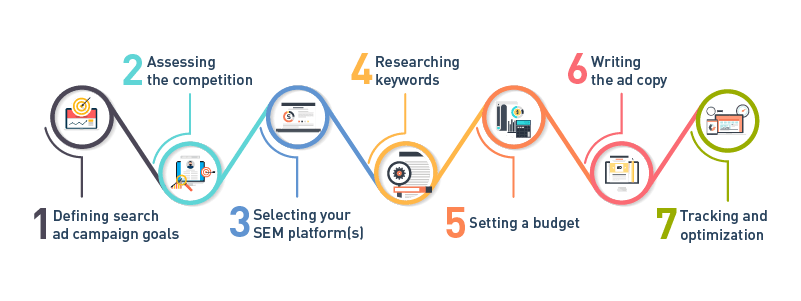
You can also choose to get started with search engine advertising (SEA). With this, you will create advertisements that appear in Google search results, for example.
As we have already mentioned, the big advantage of SEA is that you can immediately get a lot of visitors to your website. You create a campaign, activate it, and as long as you pay, visitors will be coming into your website.
The disadvantage is that if your website does not have an optimized sales funnel or high conversion rate, you can run at a loss.
What is SMMA?
SMMA is the abbreviation for Social Media Marketing Agency; or a company that does social media marketing for other businesses.
The term SMMA has become increasingly popular in recent years; This is mainly because more and more companies want to use social media and use an SMMA (social media agency) for this.
An SMMA company ensures that their customers’ social media is picked up and that social media is ultimately a profitable part of the business.
In the video below, I explain the term SMMA.
Because social media is becoming increasingly popular, there is also an increasing demand for social media marketing agencies.
The business of an SMMA is to tackle the social media of other companies, and thus make social media profitable – or at least to ensure that the company is visible on social media.
What does TL; DR mean?
TL; DR is an abbreviation for ‘Too Long; Didn’t Read. This term is used to indicate that a text is too long and, therefore, not interesting enough to read.
Often at the beginning of a text is already started with a TL; DR and a small summary of the story are given.
Indeed, on social networks like Reddit, the term TL; DR is often used.
What is the BANT approach?
The BANT approach stands for Budget, Authority, Need, and Timing.
The BANT approach determines the quality of the leads.
Budget: Here, it is checked whether the Lead has sufficient budget to purchase the product. When it is determined in advance that the Lead does not have the available budget, there is, of course, not much to offer.
Authority: Now, this is checked whether the Lead is authorized to make the decision to purchase the product or service. If the Lead is not allowed to make decisions, it might be a better idea to speak to someone else from that company.
Need: Does the Lead have enough need for the product or service? If the need is not high enough, it may not be wise to put a lot of time into this Lead.
Timing: Is this the right time for the Lead to start on your product/service? Does the Lead still have agreements with other suppliers? Or is this the perfect moment for the Lead to switch to your product or service?
With the BANT approach, you deal with these matters in advance, and you can be sure that you are dealing with high-quality leads and do not waste your time on inadequate leads.
What is https?

Https stands for HyperText Transfer Protocol Secure and thus is a protocol. This protocol handles the handling of requests between the web browser (e.g., Google Chrome) and the webserver (e.g., Apache).
Https is the ‘successor’ of HTTP, which stands for HyperText Transfer Protocol (before the web had to be massively secured). The ‘s’ of https stands for Secure and ensures an encrypted connection.
As a result, third parties (malicious parties) can hardly find out which data (data) is being sent between the user and the webserver.
In order to use an https connection, an SSL certificate must be installed on the website.
How do you know if an SSL certificate is being installed?
In the browser, you can easily see whether or not an SSL certificate is being used.
If the domain name starts with https instead of HTTP, an SSL certificate is used. You will see a green lock in front of the domain name in Google Chrome and other browsers. If the lock is crossed – the website is not secure.
HTTPS vs ‘just’ HTTP?
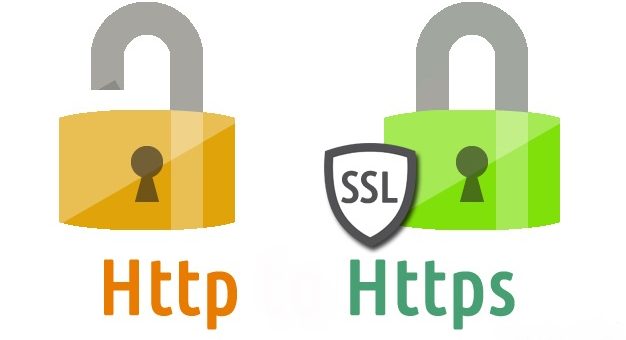
I hear a lot of questions from people who want to know whether to use https or not. Using an SSL certificate costs money (starting from $10 per year), but my advice is that if you can afford it and have a website that you really want to use for years to come, it is best to get an SSL certificate.
Google takes https sites more seriously and will rank them higher in search results.
If you have an online shop, it is always wise to install an SSL certificate; this is mandatory and gives visitors confidence.
What is USP?
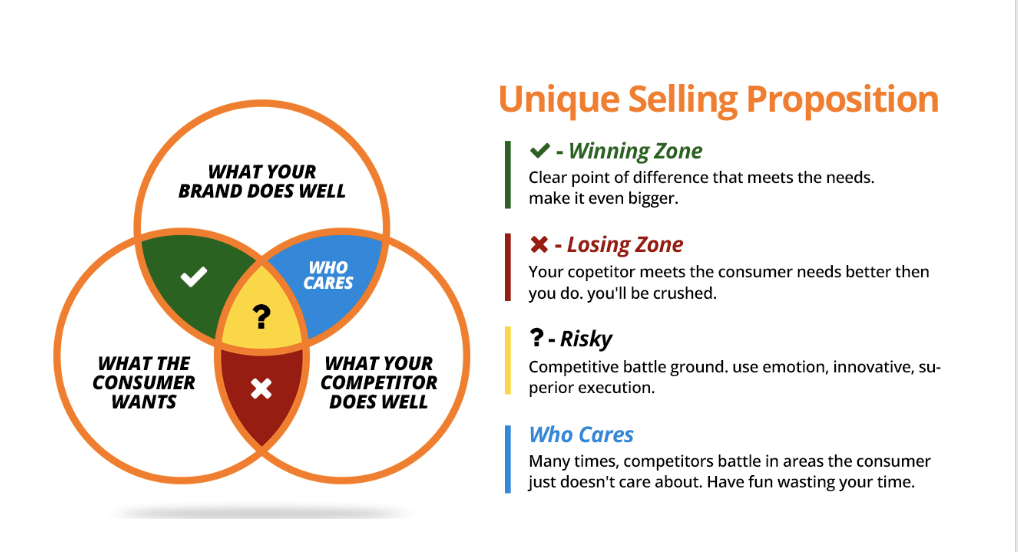
USP stands for Unique Selling Point (or “Proposition”) and can be translated into a unique product feature, or whatever makes your product (or service) uncommon and stand out.
Every company has or must-have, a Unique Selling Point. That is what makes you different and why people buy from you, not your competitors.
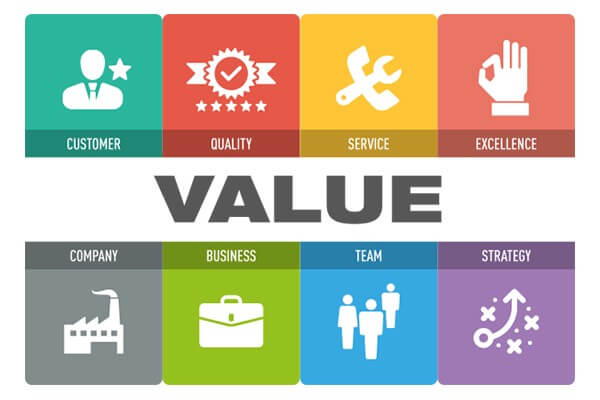
Ask yourself – where you can distinguish yourself?
What can you offer that your competitors cannot?
What makes your company (or product) different from your competition?
Think about:
- Personal customer service
- Fastest delivery time
- Lowest price against the best quality
- Best conditions
- And so on..
Why should you determine your Unique Selling Point?

It is important to clarify what is your Unique Selling Point. This allows you to adjust your marketing and play your USP, making it also clear to your customers.
If your USP is that you can deliver super-fast, you must include this in your marketing campaign.
Make sure you distinguish your product or service from the competition. If all your competitors bet on the lowest price, then it is not appealing to take this as a unique selling point. You can then focus on providing the best customer service, which will become your unique selling point and help you beat the competition.
What is SaaS?
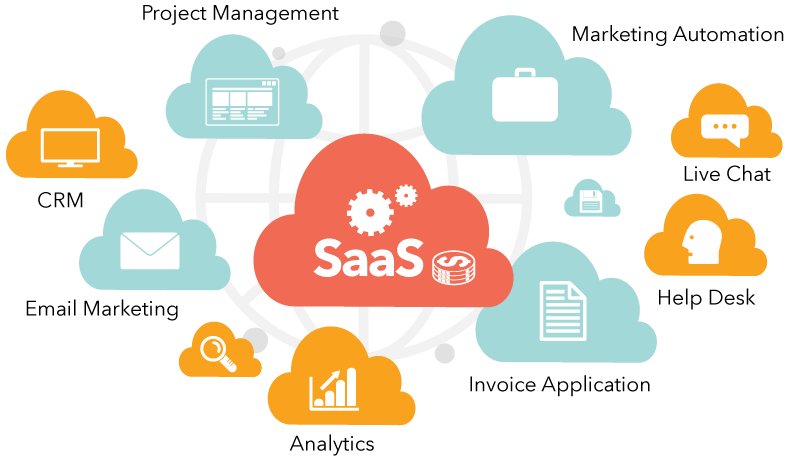
SaaS represents the term Software As A Service and can be best described as software delivered over the internet – such as a subscription, forum software, affiliate marketing platform software, or any other paid software added to a website or app.
A big advantage of SaaS is that you often do not have to pay huge prices at once but rather pay a (smaller) monthly fee for as long as you remain a customer and use the service.
Other advantages of SaaS are that you get ‘free’ updates and that you can also expect the software to be maintained appropriately, and the technicians on the other end will handle all the technical issues.
SaaS – benefits for developers
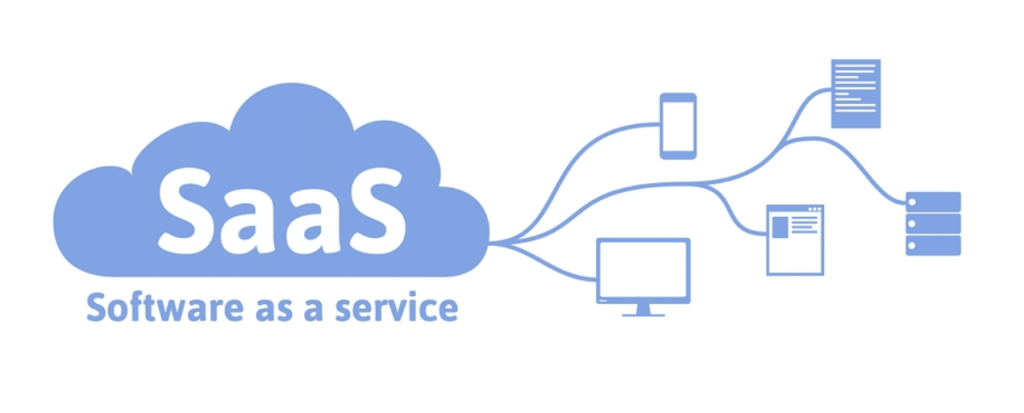
Setting up a SaaS has significant advantages for the developer.
A big advantage is that you can stack subscriptions and that the software remains the same for everyone. In principle, you only have to develop the software once, while more and more customers can simultaneously use the software.
If more and more people will start using your SaaS software, you will receive compound income from current and new subscribers.
LSI Keywords
LSI Keywords are Latent Semantic Indexing Keywords, which basically means the semantic terms.
I’ll give you an example.
Suppose I search in Google for the term ‘make money with affiliate marketing,’ I will also get a “suggestion” in Google about relevant ‘semantic’ search terms, as you can see in the screenshot below.
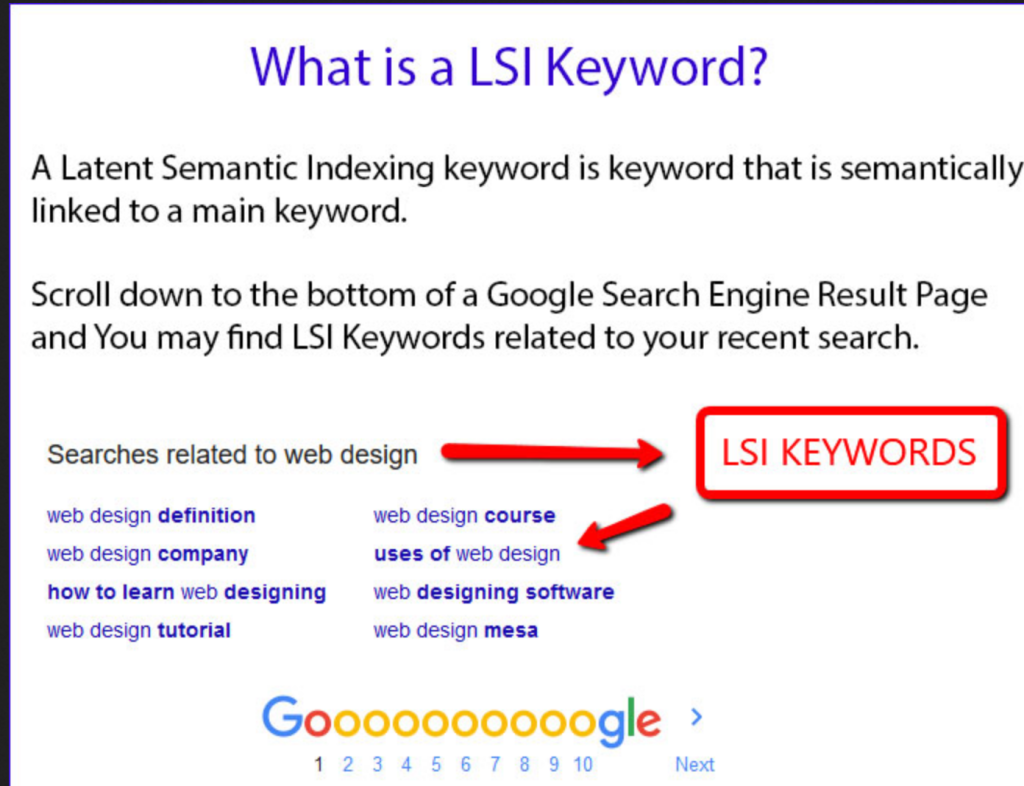
So you see that not only extended search terms come into the picture, but also terms such as ‘best affiliate niches.’ In this case, that is an LSI Keyword.
When you are going to create content about ‘making money with affiliate marketing,’ it is wise to also look for LSI Keywords in Google in order to include them in the content and therefore cover all the related search terms that people are looking for.
People who search for ‘making money with affiliate marketing’ are apparently also interested in the ‘best affiliate niches.’ When people search for ‘best affiliate niches,’ the intention is that they will also come across your page about ‘making money with affiliate marketing’ in Google, because you have also incorporated this term in your content.
What is a discount code?
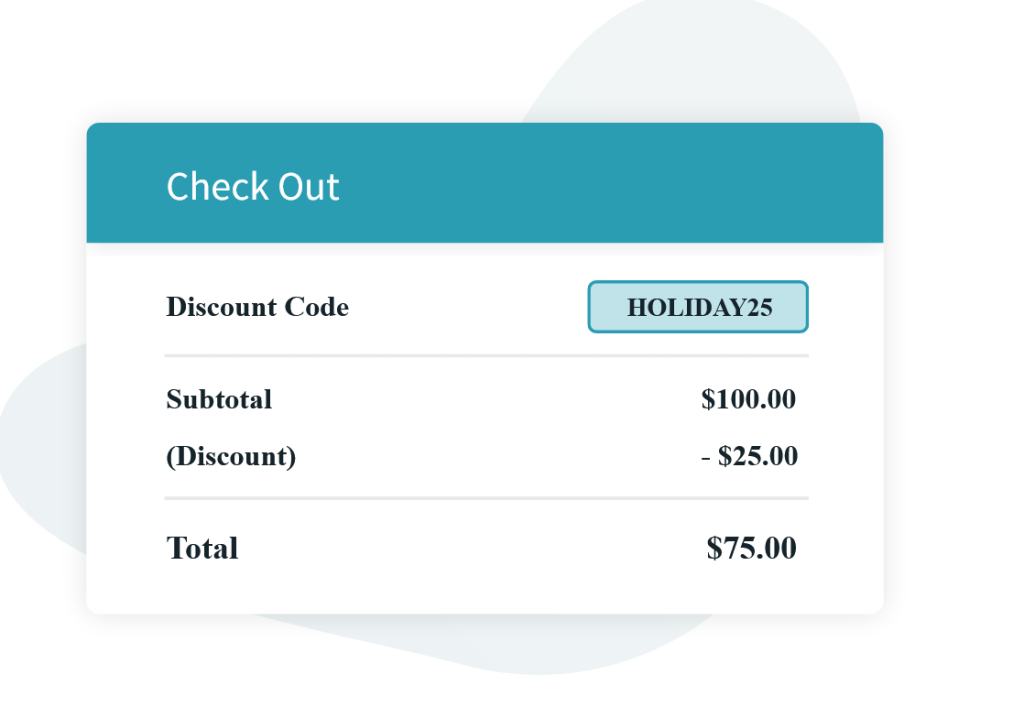
A discount code is a special code with which you can get a price reduction. You enter this code at checkout so that the discount is applied to your cart, and you end up paying less.
Discount codes are often used to stimulate additional sales, such as in a discount or coupon promotion.
What does FAQ mean?

FAQ stands for Frequently Asked Questions.
You will see an FAQ on nearly every website. These are questions that customers often ask and get published to avoid repeated queries to the support team.
Frequently asked questions are often questions about the shipment of products, returns, or the delivery time.
A good FAQ section on your website can ensure that you are not overloaded with questions that customers repeatedly ask and also answer “concerns” potential customers may have prior to making a purchase.
What does Q&A mean?
Q&A stands for Questions and Answers.
You would think of Q&A as another abbreviation for FAQ (Frequently Asked Questions), but a Q&A nowadays is more about a way to ask your questions live via social media, YouTube videos, webinars, or any other workshop.
Many famous people schedule a Q&A for their fans. In such a Q&A, fans can ask their questions live and get an instant reply.
What is Google SERP?
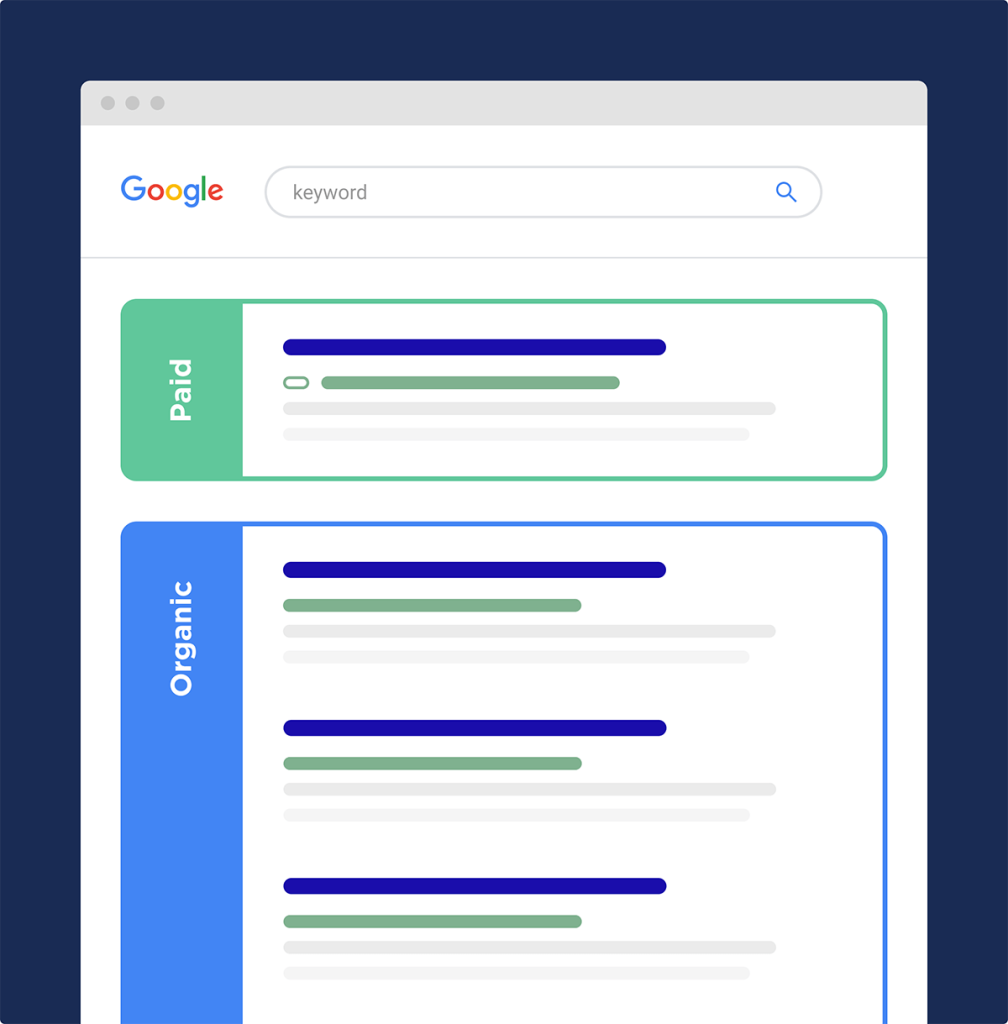
SERP stands for Search Engine Results Page (or Search Engine Ranking Page) and means the page you see when you search for anything in particular in Google.
When you type something in the Google search window and see the results, you will end up on Google’s SERP. Here you can then click on to websites that contain more information about the search term you searched for.
On the SERP page, you will find different results, depending on what you are looking for. For example, if you search for a place name, the chances are that you will also see an example of Google Maps, with the place you searched for. If you search for a product name, the chances are that you will also see Google Shopping results. In addition, the SERP page often consists of paid and organic search results.
Where is your page in the Google SERP?
If you have your own website, you naturally want to know where your website is in Google’s SERP’s page.
You can use a so-called SERP checker for this. You just need to input your website URL and keyword and see your website’s number in the results for that particular search term. By using the SERPs checker tool, you can see where your website really is in the Google results. This will determine, in a direct correlation, the volume of traffic you will receive.
What is an EMD domain name?
EMD stands for Exact Matching Domain. An EMD domain name is a domain that consists of one specific search term and is often used in affiliate marketing when targeting a micro-niche.
With an EMD domain, you hope to rank (easily) in Google on one specific search term. An example of an EMD domain name would be searchengineagency.com, a website that obviously tried to rank for the term “search engine agency.”
With EMD, you expect to score in Google on the term you include in your domain.
A few years ago, Google EMD domain names ranked fairly high in the organic search results, but nowadays, it is better and more important to have an authority domain name.
What is an A/B Test?
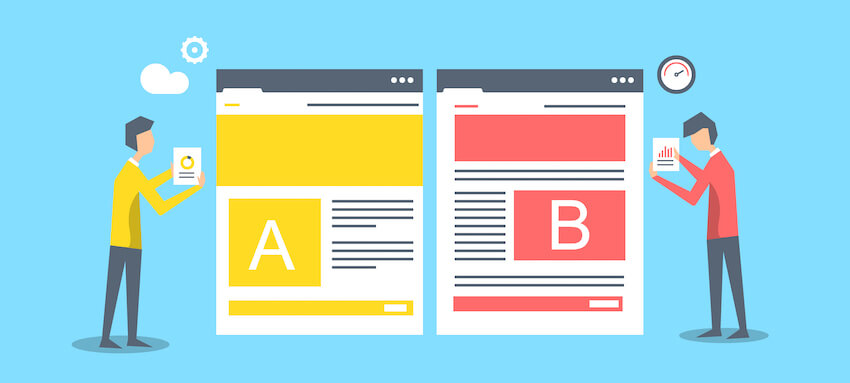
An A / B Test is a split test between two different pages. By setting up a split test, you can see which page converts better.
With an A / B split test, you experiment with two pages against each other – 50% of the visitors will see version A, and the other half will see version B.
By keeping the statistics of both pages, you can see which page has a higher conversion and, therefore, I more suitable for marketing purposes.
Why A/B Testing?

It is important to implement A / B Testing on your affiliate marketing website. Suppose you find out through an A / B Test that one page converts 3% higher.
For 10,000 visitors per month, that’s 300 extra leads (or sales). In the long term, this can make a huge difference on your website and business.
What is an ezine?
An ezine is a digital magazine, a magazine that is not printed but published online.
In principle, an ezine is the same as a magazine, but digitally. Many companies release their own ezines to put their brand in the spotlight.
Ezines are nothing but a form of online marketing.
Because ezines do not have to be physically distributed, the release cost of an ezine is relatively low, and you only have to put it online once.
An ezine is more than just a blog, and it doesn’t feel like it; it has more the appearance of a ‘normal’ magazine. An ezine also often consists of separate pages that you can ‘browse’ through.
What is a sales funnel?
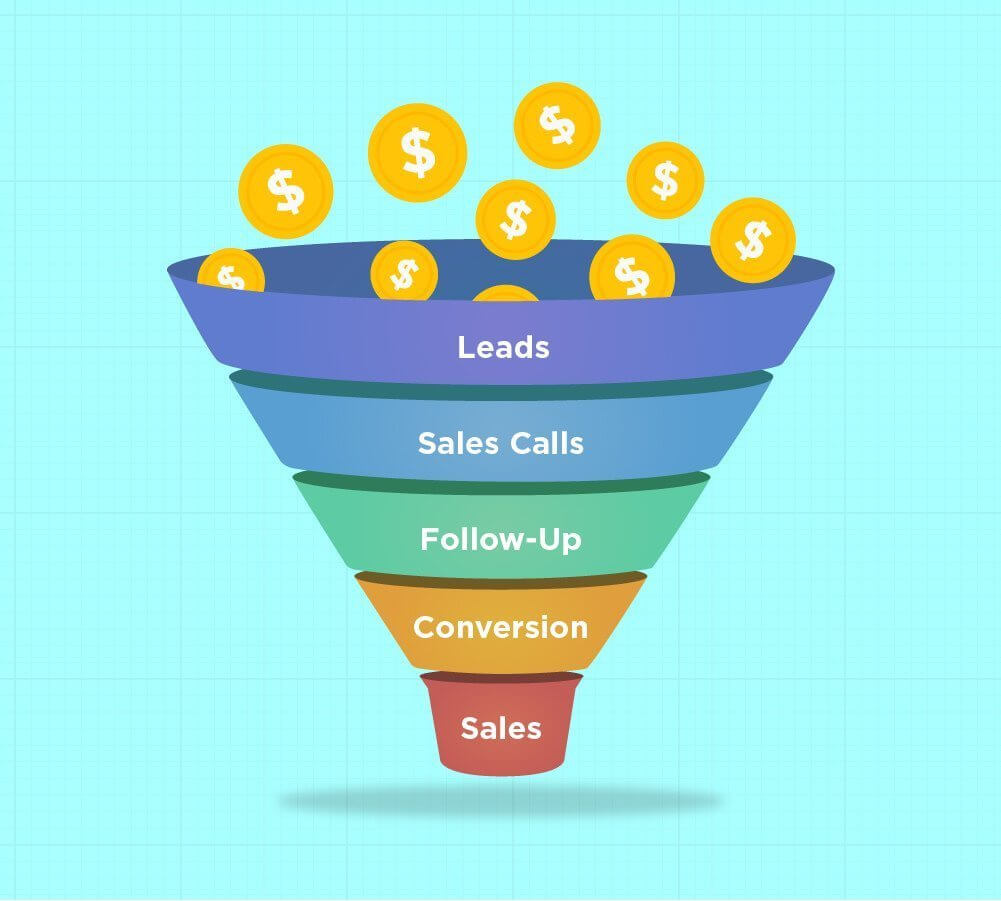
A sales funnel a process in which leads enter a ‘funnel’ through which they are encouraged to buy a particular product.
By optimizing a sales funnel, you, as a product (or affiliate product) marketer, can get the most out of your leads and offer your leads the most comfortable experience.
How does sales funnel work?

I’ll give you an example of how a sales funnel works.
Imagine you come to a website and then enter your name and email address to download something for free.
You then enter the sales funnel and get to the ‘top’ of the sales funnel.
After your initial download, you will receive the first email in which more information is shared. Then, you’ll start receiving emails every other day (for example) in which you are familiar with the paid product and its benefits, and you are constantly encouraged to buy the product. You will most likely receive a promotional coupon or a “hard to pass by” discount code.
This is the process of a sales funnel.
How to optimize sales funnel?
As a marketer, you want to sell as many products as possible and profit from every lead.
You can do this by optimizing your sales funnel.
Not all marketers do it, but you can generate much more sales by optimizing your sales funnel. You can do this by closely monitoring your statistics and split testing. Which email sells better?
You can also personalize sales funnels – this allows you to determine that certain emails from the funnel are only sent when a previous one has been opened – or that a certain link in the mail has been clicked.
What do you need for a sales funnel?
You need software to set up a good sales funnel, web-based software to build a mailing list (collect leads), and software for creating landing pages.
Don’t be afraid to invest in good software service, because a good sales funnel will always pay for itself.
Conclusion
Affiliate marketing is a complicated business using many terms, abbreviations, and methods only savvy affiliates and marketers understand. If you are new to the affiliate marketing business you need to learn the terminology before diving deeper, because you will stumble upon the terms covered here today in every step of your affiliate marketing journey. Be sure to bookmark this page so you will have your affiliate marketing glossary always at hand.
Last Updated on October 18, 2023





